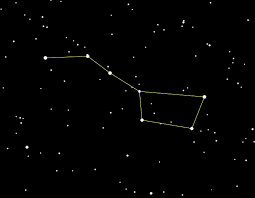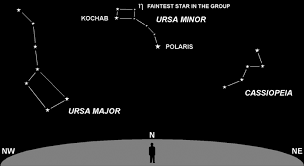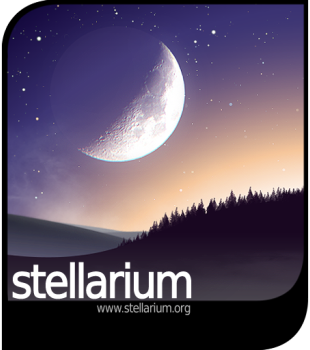Getting Started in Astronomy
Astronomy is a fun and rewarding pastime, and getting started is easy!
Here are your 10 first steps to get you going:
- Print a star chart for the current month or print and assemble a planisphere (star wheel) – don’t be intimidated if it all looks a little complicated at this stage.

-
Learn to navigate the night sky: at each time of the year, there are prominent, well-defined groups of stars (called constellations) that are easy to identify and are your starting point and sign-posts to all of the others.
For example, the Plough (The Big Dipper, Ursa Major) is visible all year round and is reasonably easy to spot.
Keep in mind that you don’t have to learn all this by yourself – your local Astronomy club can help. Attend an observing session; there should be a laser-pointer guided tour of the sky. - Try a star hop – once you have identified your first constellation, use it as a starting point to find the next. For example, when you have found the Plough, step from the pointers to the North Star (Polaris, in the Little Dipper, Ursa Minor) - the distance from the Plough to Polaris is 5 times the gap between the pointers, and then across the sky to Cassiopeia, which has a very distinctive ‘W’ shape.
- Get your binoculars out. Even the most basic ones will reveal a wealth of detail that you won’t see with the naked eye – double stars, star clusters, gas clouds and distant galaxies.
- Don’t rush out to buy a telescope.
Yes, you will need one if your interest in Astronomy is more than a passing fancy – but you will need the one which is right for you. Again, your local Astronomy Club can help – by attending an observing session, you will get to look through a variety of instruments and learn first-hand the pros and cons of each. Keep in mind that portability is a huge issue – if you have to travel to your observing site (and most of us do), a large, unwieldy telescope that is difficult to set up will soon become a chore. - Consider buying one monthly Astronomy magazine. The ‘Sky This Month’ section, in particular, will show you the highlights, the positions of the planets, any meteor showers and lots more besides.
- Buy one book - ‘Turn Left at Orion’ by Guy Consolmagno and Dan M. Davis. Written for beginners, this superb book is a complete guide to the night sky – but check it out online before you buy.
- Download and install Stellarium, a planetarium software that shows exactly what you see when you look up at the stars. It's easy to use, and free for PC.
- Dress for it!
There is nothing quite like frozen feet to take the gloss off an observing session and send even the most hardened observer scurrying back indoors – there is a fair amount of standing around involved and even summer nights can be cold. Depending on the location of the observing site, you may also need to consider insect repellant. - Get out there and enjoy – the wonders of the night sky will provide you with a lifetime of enjoyment, particularly here where we are blessed with such clear, dark skies.


A huge thank you to Brian Wilson who provided the following set for guidelines to photographers following his wonderful talk on astro-photography to the club:
Ten Steps to Photograph the Night Sky
- A sturdy tripod is essential due to the long exposure times.
- A camera body with high ISO capabilities and manual exposure, preferably a DLSR. Setting your camera to manual mode to take an exposure of approx 20-30 seconds (maybe less, maybe more depending on what focal length lens you are using and what you want to achieve.) Also a remote release or use of the self timer of 2 seconds, why? to reduce possible camera shake.
- A fast wide angle lens set to manual. Nikon 14-24mm, F2.8, the Canon 16-35mm F2.8. Samyang 14mm F 2.8, Samyang 24mm F1.4, Sigma 35mm 1.4. That said, your normal kit lens 18-55mm f3.5 will work fine too as will many other prime lenses.
- Focusing at night can be a challenge, one preferred method is to use live view, zoom in on a bright star (with the zoom buttons, not the lens) and manually focus until it's a sharp point of light. If you're using a prime lens you can simply set your hyper-focal distance with the markings on the lens. Some lenses have their own unique characteristics so play with it a little to find infinity.
- High ISO's are the key to capturing a bright Starry sky, don't be afraid to push the limits of your camera, this is the only way to capture enough light to create a great image. Start with ISO 3200 and go up or down from there to get the correct exposure.
-
Long shutter speeds allow you to collect light over time, the longer you go, the brighter the Milky Way and stars will be. There is a caveat to this though; the earth is rotating. If you leave the shutter open for too long you will create star trails, which is not desirable for the Milky Way. To avoid this you can follow the 450 rule. Some say the 600 or 500 rule but I find the 450 rule to be most pleasing. What is the rule? Divide the focal length of the lens into 450 to get the correct exposure time to avoid star trails or movement of the Stars. (35mm format)
e.g. 1. You have a 50mm lens on a 35mm sensor camera (Full frame camera), what max exposure time to use for avoiding star trails? 450/50=9. So 9seconds would be the max exposure time before Star trails would begin to become noticeable.
e.g. 2. You have a 50mm lens on a cropped sensor camera, you need to firstly convert to equivalent full frame focal length. So 50mm x 1.5 for most croppedsensor cameras or 1.6 for canon cropped sensors camera. So 50mm x 1.5= 75mm equivalent on a full frame, then 450/75=6. So a 6 second exposure will be your max exposure time. - Set your aperture wide open, meaning the smallest number possible (f2.8, f1.4, etc.), but this will depend on the lens you’re using. We have to capture as much light as possible, so depth of field is less of a concern than it would normally be. You may have to stop down some lenses to correct for coma or softness, for example you may need to stop down an f/1.4 lens to f/2, and this varies by lens.
- Finding a dark sky is the most important step to seeing the Milky Way. Light pollution from Cities and Towns tends to washes out the night sky; you may have to drive a long distance depending on where you're located.
- Careful attention must be paid to the phase of the moon; a full moon will wash out the Milky Way. The best time to go out is 4 days before or after a new moon. Or why not use the Moon to light a foreground? Again going either 4 days before or after a full moon, the Moon would work very well to light a landscape or foreground.
- Many people are surprised to find out the Milky Way is not visible the entire year, at least not the brightest portion that is easily visible to the eye. The best viewing times are May thru December in the northern hemisphere.
Important
Always dress accordingly, hats, gloves, warm clothing, high visibility vest, boots, wellies. Bring some snacks and a flask of something warm if you plan on being out for an extended period. Make sure to charge all batteries including phone etc.
Scope out possible locations during the day, check phone coverage and make sure to have enough fuel in your vehicle.
Always
let someone know where you are going or intend to go, especially if going alone.
